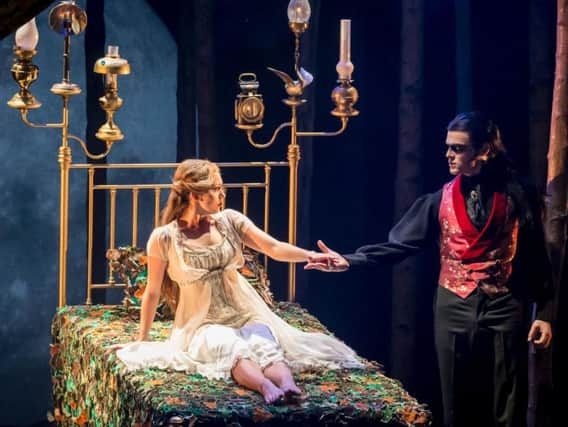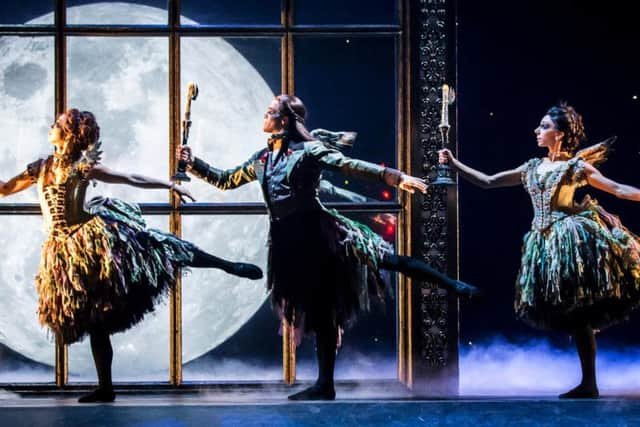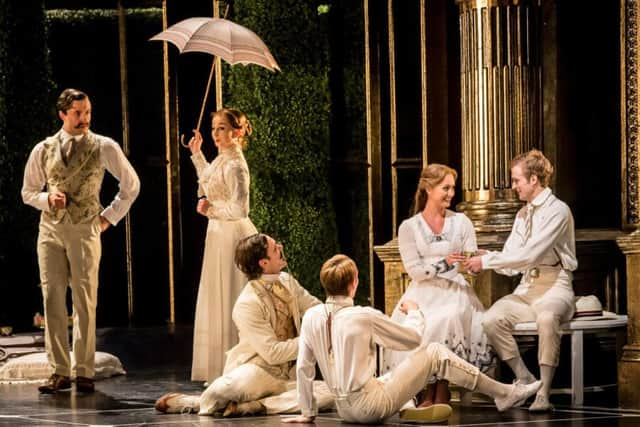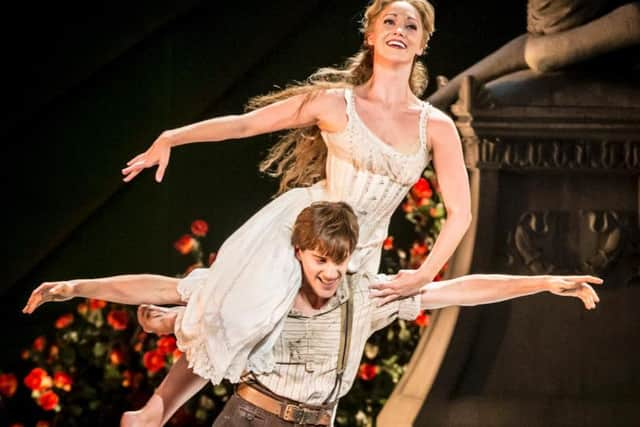REVIEW: Matthew Bourne's Sleeping Beauty, Theatre Royal Newcastle, until April 16


Sleeping Beauty is a revival of a production which premiered in 2012 and was the fastest-selling production in the company's history. It was created for New Adventures' 25th-birthday celebrations and completed the famed choreographer's trio of re-imagined Tchaikovsky ballets that started in 1992 with Nutcracker! and continued, most famously, with the international hit Swan Lake in 1995.
Perrault's timeless fairy tale, about a young girl cursed to sleep for 100 years, was turned into a legendary ballet by Tchaikovsky and choreographer, Marius Petipa, in 1890. Act One, which features the birth of the heroine Aurora, is set in this year, playing up to the idea of the Gothic imagination. The moon is out, there's smoke pouring onto the stage and the fairies come to visit. A fairy tale with, well, fairies - so far, so normal.


Advertisement
Hide AdAdvertisement
Hide AdThen the curtain comes up on Act Two and the brightness is a marked contrast with the stage transformed into an Edwardian party for Aurora's coming of age in 1911. It's all linen suits, parasols and tea on the lawn, but the happy atmosphere is smashed as the long-promised curse comes back to disrupt the lives of the main characters. Cleverly, then comes the interval - of 100 years - which brings us to Aurora waking up in 2011, before Act Four takes place 'last night', at her wedding, leading to an ending which neatly rounds off the production by tying it back to the beginning.
As ever, the choreography and the dancers' performances were superb; the introduction of the fairies in Act One was notable in that each had his or her own character expressed through their dance. The final coupling between Aurora and her lover really was touching, while the sections in which she was asleep and being dragged and cast round the stage, by friend and foe, were extremely impressive.
Cordelia Braithwaite, as Aurora, was perfect as a typical fairy-tale heroine coming of age, innocent and care-free at first before being drawn into a darker world and having to grow up. She was well matched by Chris Trenfield as Leo, the Royal gamekeeper, while I enjoyed Liam Mower's performance as Count Lilac, King of the Fairies. Adam Maskell brought real menace to roles of the sinister dark fairy, Carabosse, and her son, Caradoc.
The staging made very good use of the space available with each section taking place in a vastly-different setting and two strips moving in opposite directions towards the back allowing the fairies to drift and glide through the smoke and fog. There were also plenty of laughs provided by the neat touch of the baby, controlled by extremely deft puppetry to create an expressive and cheeky youngster.


Advertisement
Hide AdAdvertisement
Hide AdHowever, I couldn't help but feel that this production lacks a little of Sir Matthew's extra magic that made both Swan Lake and The Car Man - the other two of his productions that I have seen - so special. What impressed me so much with those two productions was that they transformed ballet, often seen as staid and snobbish by those who have never experienced it, into something modern and accessible.
I left feeling that this was perhaps more of a show for the purists - I still loved it - but wouldn't necessarily recommend it to those unfamiliar with ballet as I would with the others. For example, Act Three is set in 2011, but apart from a few brief nods to the 2000s - selfies and hoodies - it could have been anywhere or any time. It felt like a missed opportunity for a scene similar to the trip to the nightclub in Swan Lake, which toyed with the conventions and brought a modern twist to proceedings.
It is interesting to note that in a Q&A with the director, published in the programme, he addresses the gap between his first two Tchaikovsky adaptations, in 1992 and 1995, with this third in 2012, saying it had crossed his mind on more than one occasion to complete the trilogy in the interim, but he 'struggled to hit on the perfect idea'. He added: "I had always found it a daunting thought to try and approach a score that was so associated with the pinnacle of classical ballet form and grandeur; and, to be honest, the story had always left me a little cold."
I feel that he has managed to create a very engaging and successful production that, although it features a number of new aspects as part of his own spin on the tale, sticks more closely to 'classical ballet form and grandeur'.


Advertisement
Hide AdAdvertisement
Hide AdMatthew Bourne's Sleeping Beauty appears at Theatre Royal Newcastle until Saturday, April 16 - evenings, 7.30pm; Thursday matinee, 2pm; Saturday matinee, 2.30pm. Tickets cost from £17 and can be purchased at www.theatreroyal.co.uk or from the box office on 08448 11 21 21 (calls cost 7p per minute plus your phone company's access charge).